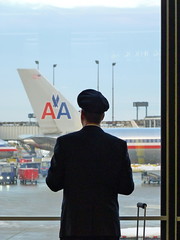In the early days of transport truck driving the ride wasn't as comfortable as it can be today. Drivers needed comfort and stability to work hauling product across many miles of terrain and weather conditions could be dismal depending on where you were to take your wares. In 1910, there were only an estimated 10,000 transport trucks in all of the United States, with most of them making deliveries around large populated areas only. In the early days, tires were solid rubber, making the journey, long and tedious. In the 1920's, when tires became pneumatic (air~filled), the hauling of goods began to pick up speed and retail growth boomed.
When running lights were added to the trucks in 1912, it made it possible to run them at night, further opening doors to marketing venues across the country. And to further promote distance and time, the fifth wheel was added in the 1920's giving the semi~trailer more popularity in how the distribution of products was moved. As more roads were paved allowing the semi's to travel unhindered to often unreached places, the popularity in the career grew and by the 1930's there were over 330,000 transport/cargo trucks gracing America's newly formed highways.
Today, approximately 3.2 million Americans drive transport trucks across the highways and byways of North America. However, with the rules inacted with the 1935 Motor Carrier Act, drivers have rules and regulations that have to be adhered. Drivers are only allowed to spend 60 hours per week behind the wheel or eleven hours per day.
Driving truck can be a grueling and lonely experience often spending many hours on the road, away from family and loved ones. The job can tax your health and your sanity and is often the result of a high turnover rate on employment. A CDL ticket is a must have in the industry and one needs to pass both a written and driving skills test. Anyone interested in obtaining a career in truck driving should take advantage of many of the truck driving schools that are located in almost every city. Because driving long~haul trucks can be a dangerous job, proper training and knowledge is the key to a successful career.
 ** This is a sponsored post for MTS Driver Recruiters, however, all the points and views are my own. **
** This is a sponsored post for MTS Driver Recruiters, however, all the points and views are my own. **
































































